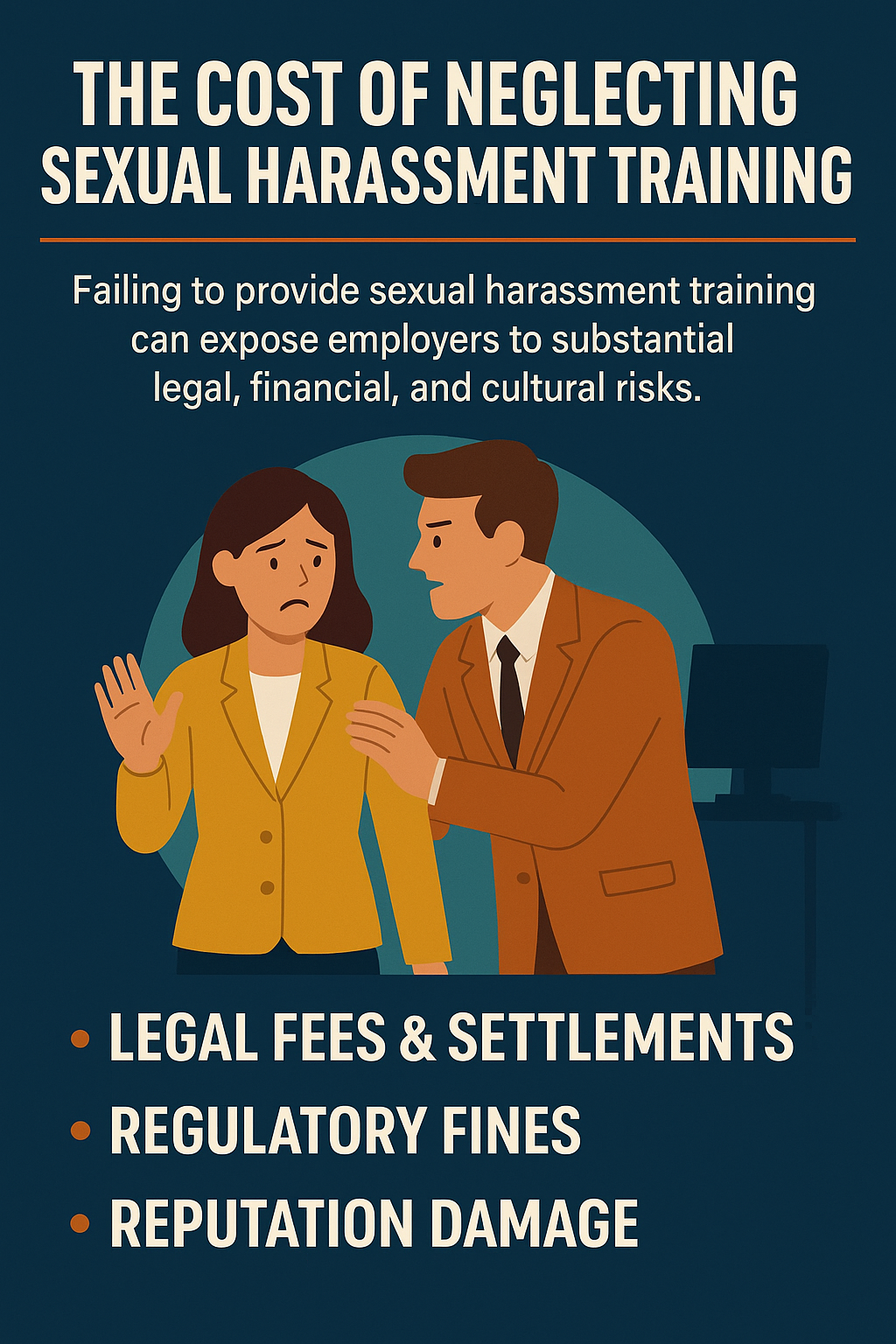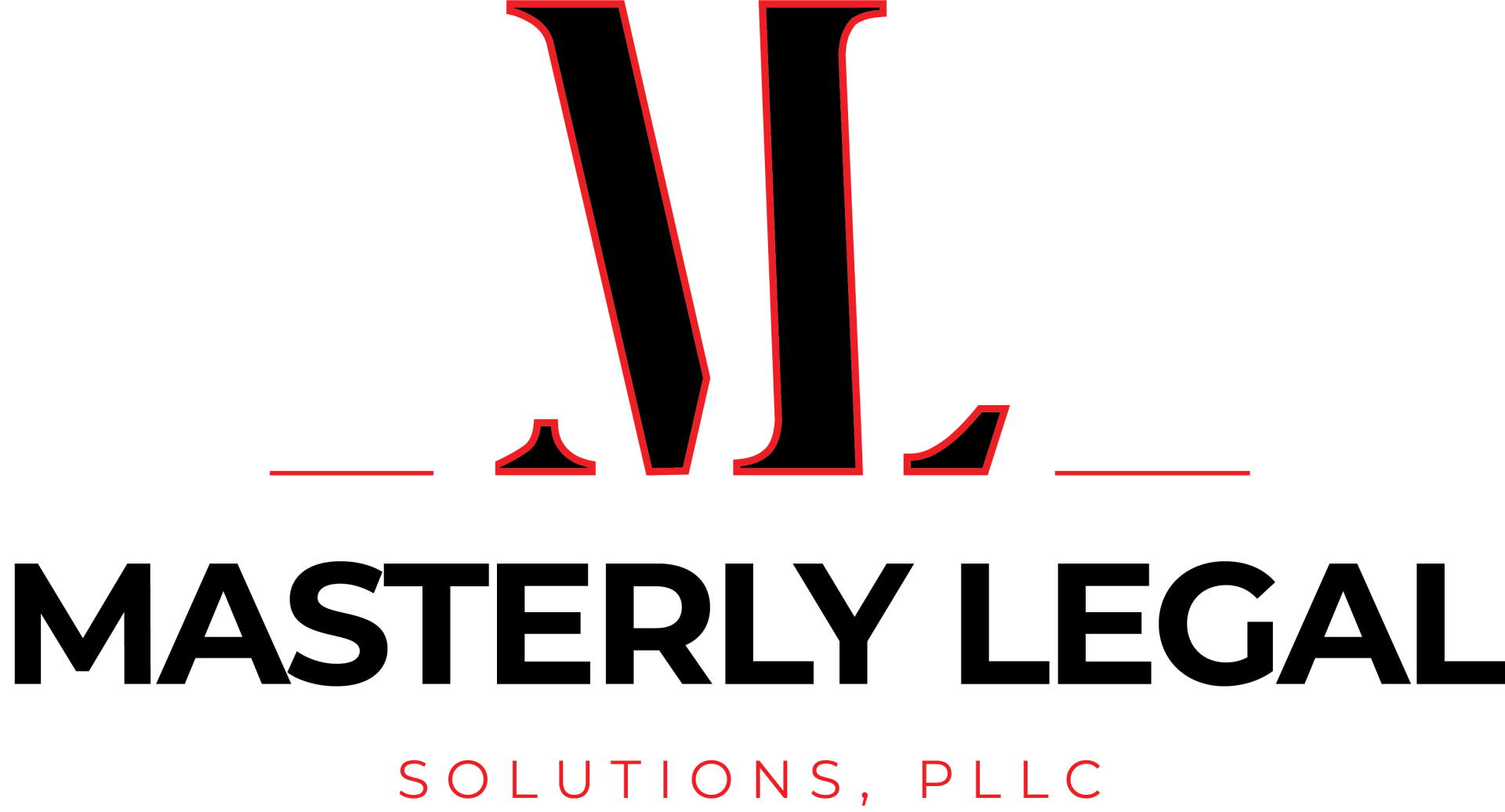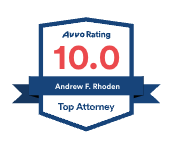The Cost of Doing Nothing: What Every Employer Risks Without Proper Harassment Training
Workplace harassment is one of the most damaging issues a business can face. It destroys employee morale, erodes trust, and creates costly legal exposure. Despite the well-documented consequences, some employers still overlook sexual harassment training or underestimate the impact of harassment prevention training. The reality is that the cost of doing nothing is far greater than the investment required to implement effective workplace harassment training programs.
In this article, Masterly Legal Solutions explores the legal, financial, and cultural risks of failing to provide sexual harassment training, with real-world examples of businesses that paid the price for non-compliance.
The Growing Legal Obligation for Harassment Training
Under state and federal harassment training requirements, employers are increasingly required to provide training to all supervisory employees and non-supervisory employees. Federal mandates under Title VII of the Civil Rights Act prohibit unlawful discrimination and sexual harassment, while many states—including New York State and California—require annual training for companies with five or more employees.
For example, New York City employers must provide sexual harassment training for employees that includes information on unlawful harassment, retaliation, and harassment prevention practices.
Failing to comply with these training requirements can expose employers to significant liability—even if no formal complaint has been filed.
Real-World Example: The Cost of Ignoring Sexual Harassment Prevention Training
In one landmark case, a tech company paid over $4 million in damages after failing to implement proper sexual harassment prevention training. Employees alleged inappropriate behavior, offensive jokes, and sexual violence that went unaddressed by supervisors.
Because the company had no documented training program, the court ruled it had not taken reasonable steps to prevent harassment. Had they invested in effective training, the outcome might have been drastically different.
Financial Consequences of Non-Compliance
Ignoring workplace harassment prevention training doesn’t just risk lawsuits—it directly impacts the bottom line. Companies can face:
- Legal Fees and Settlements: Lawsuits for sexual harassment or workplace harassment often result in six- or seven-figure settlements.
- Regulatory Fines: Many states impose fines for violating harassment training requirements or state laws governing compliance training.
- Lost Productivity: Toxic workplace culture leads to high turnover and absenteeism.
- Reputation Damage: Publicized cases of sexual harassment can permanently damage a brand.
Even a single case of illegal harassment can result in years of financial and reputational fallout.
How Harassment Affects Workplace Culture
Beyond legal exposure, the absence of workplace harassment training undermines the very foundation of a respectful work environment. Employees who experience or witness harassment in the workplace often report lower morale, decreased job satisfaction, and loss of trust in management.
By investing in harassment prevention, employers send a clear message: every employee deserves to work in a safe, inclusive, and professional setting.
Understanding the Types of Workplace Harassment
Harassment comes in many various forms, not just sexual harassment. Common examples include:
- Verbal abuse or offensive jokes
- Physical intimidation or unwanted touching
- Discrimination based on sexual orientation, gender expression, or national origin
- Retaliation against those who report misconduct
Workplace harassment prevention training helps educate employees on recognizing, reporting, and preventing these behaviors before they escalate.
The Role of Supervisors and Managers
Supervisors and managers play a critical role in maintaining a harassment-free workplace. They must understand how to recognize and respond to unlawful harassment promptly and appropriately.
Employers should ensure all staff in supervisory roles receive training tailored to their responsibilities, including how to document complaints, protect new employees, and support conflict resolution efforts.
Compliance Training: More Than a Legal Requirement
While compliance training satisfies state laws, it’s also a strategic investment in the long-term health of your company. Comprehensive workplace training programs improve employee engagement, reduce turnover, and foster a culture of accountability.
Some employers also integrate inclusion training, workplace violence training, and sexual harassment prevention modules to build a holistic approach to harassment prevention.
What Effective Sexual Harassment Training Looks Like
An effective training program should include:
- Clear definitions of sexual harassment and workplace harassment
- Examples of inappropriate behavior and unlawful discrimination
- Steps for employees to safely report misconduct
- Protections against retaliation
- Information on sexual harassment training requirements for all new hires
Interactive sessions—whether in-person or online training—help reinforce key concepts and create lasting awareness.
Real Costs: When Employers Fail to Provide Training
In one retail chain case, managers ignored repeated reports of sexual harassment. Without a sexual harassment prevention policy or documentation of training content, the company paid nearly $10 million in damages.
Another small business with three or more employees faced closure after a lawsuit revealed no training program was ever implemented. The message is clear: failing to provide sexual harassment training is not an option—it’s a liability.
The Business Case for Harassment Prevention
Beyond compliance, harassment prevention training offers measurable business benefits. Companies that educate employees about sexual harassment prevention experience:
- Fewer HR complaints
- Stronger retention rates
- Higher job satisfaction scores
- Reduced risk of unlawful harassment claims
In short, investing in harassment training protects both your people and your profits.
When Employers Have Five or More Employees
In many states, once an organization has five or more employees, they must provide training to all workers, including supervisory employees and new hires.
These programs are often required to last two hours and cover harassment prevention, reporting mechanisms, and civil rights protections. Failure to comply exposes companies to investigations, penalties, and loss of public trust.
The Digital Age: Online and Mobile Harassment Training Options
Modern solutions make sexual harassment training easier and more accessible than ever. Online training platforms allow employees to complete courses on a mobile device, ensuring flexibility and technical support for remote teams.
These tools also simplify record-keeping and help employers track training requirements, start dates, and completion records.
Why Employers Must Take Action Now
Waiting until after a claim is filed to act is a costly mistake. Proactive harassment prevention training demonstrates due diligence and compliance with federal and state laws.
Employers who invest early in sexual harassment prevention training not only prevent harassment but also reinforce their commitment to creating a respectful work environment for all.
Common Mistakes Employers Make
Even well-meaning organizations can fall short. Common mistakes include:
- Offering such training only once instead of annual training
- Failing to train supervisory employees separately
- Ignoring additional training for new employees
- Not documenting training content and attendance
- Assuming small businesses with one or more employees are exempt
Each of these missteps increases risk and weakens legal defenses in harassment claims.
The Legal Framework: Civil Rights and Title VII
Under the Civil Rights Act, Title VII prohibits discrimination based on race, color, religion, sex, and national origin. Employers must ensure sexual harassment training and harassment prevention programs meet these legal standards.
Ignoring training requirements violates federal law and can result in EEOC investigations, costly settlements, and potential criminal penalties.
Sexual Harassment Training Requirements by State
Every state sets its own training requirements and sexual harassment training requirements. For example:
- California: Mandatory for companies with five or more employees.
- New York State: Requires sexual harassment training and written policies.
- Illinois: Mandates workplace harassment prevention training for all employers.
Staying compliant across jurisdictions helps multi-state organizations minimize liability.

Building a Culture of Accountability
The ultimate goal of harassment prevention training is to build a culture of accountability and respect. Employers must lead by example, empowering employees to report misconduct without fear of retaliation.
When harassment in the workplace is addressed swiftly and professionally, it strengthens morale, productivity, and trust.
Investing in Prevention Over Reaction
Investing in sexual harassment training and compliance training now costs far less than defending a lawsuit later. Businesses that proactively educate employees demonstrate their commitment to ethical conduct, diversity, and inclusion.
Prevention is not just a legal obligation—it’s a competitive advantage.
How Masterly Legal Solutions Can Help
At Masterly Legal Solutions, we help employers design, implement, and document sexual harassment training programs that meet both state and federal training requirements.
Our experienced legal team can guide you through every step of the training program—from initial training for new hires to annual training updates—ensuring your company remains compliant and protected.
If you have questions about sexual harassment prevention training, workplace harassment training, or your state’s harassment training requirements, we’re here to help.
Why Sexual Harassment Training for Employees Is the Key to Prevention
Many businesses mistakenly believe that once a policy is written, the job is done. In reality, sexual harassment training for employees is the cornerstone of prevention. It equips every team member—from entry-level staff to executives—with the knowledge and confidence to recognize, report, and prevent harassment before it escalates into costly legal or reputational damage.
Modern online training options make it easier than ever for companies of all sizes to stay compliant without disrupting operations. These flexible programs can be completed on any device, allowing employers to educate both in-office and remote workers effectively. When businesses invest in consistent education and accountability, they not only reduce harassment in the workplace but also cultivate a stronger, more respectful organizational culture where employees feel valued and protected.
Contact Us for a Free Consultation
Protect your business, your employees, and your reputation. Contact Masterly Legal Solutions today at (972) 236-5051 for a free consultation about your company’s harassment prevention and compliance training needs. Let’s ensure your workplace remains a safe, respectful, and legally compliant environment for everyone.
Disclaimer: This article is for informational purposes only and does not constitute legal advice. For guidance tailored to your specific situation, please consult with an attorney.
Looking for Legal & Business Solutions? Contact Us Now
Fill in the form or call us to set up a meeting














